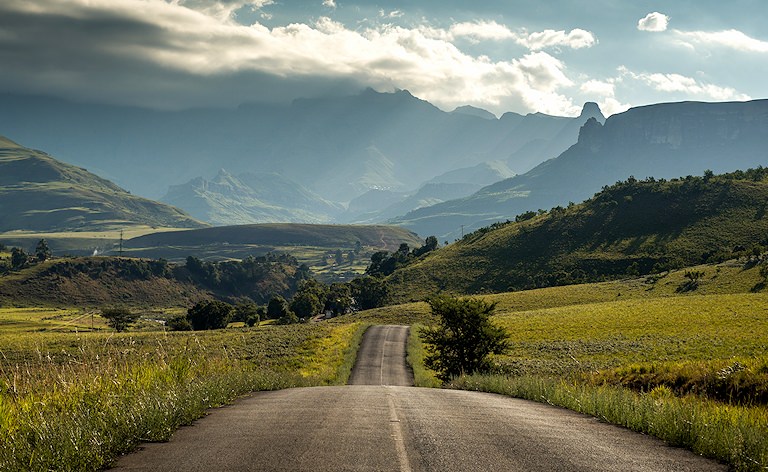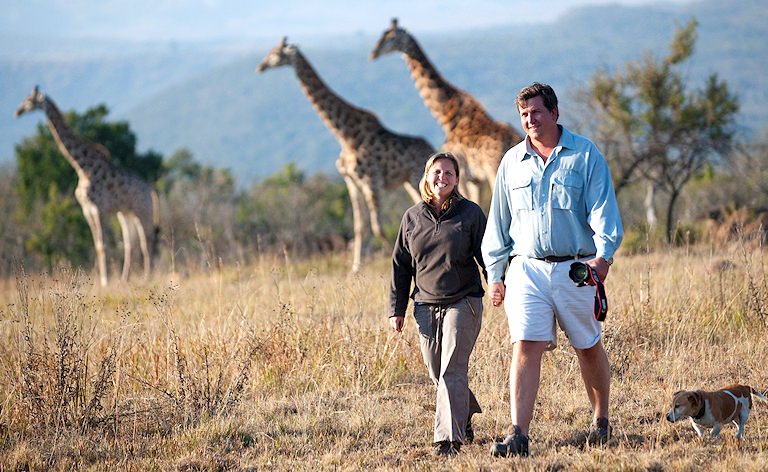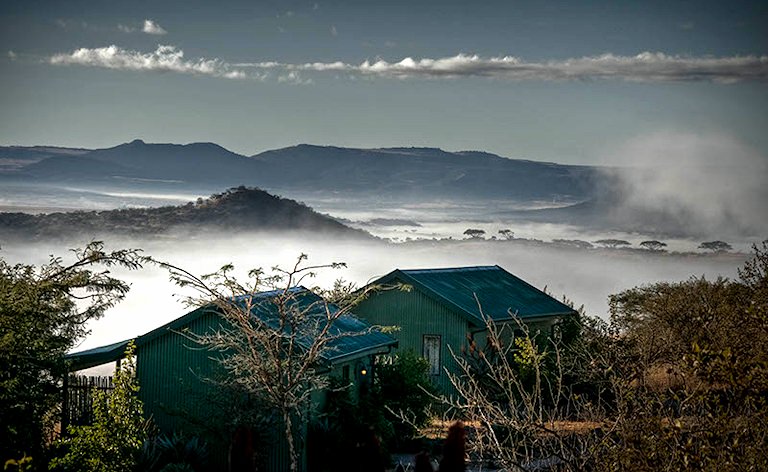Summary
This luxury tour combines KwaZulu-Natal’s most significant battlefields with expert guiding and outstanding scenery on the edge of the Drakensberg. Visit renowned sites such as Isandlwana, Rorke’s Drift, Blood River (Ncome), and Spioenkop, while staying at Fugitives Drift and Three Tree Hill.
- 4 Nights KwaZulu-Natal Battlefields
Price Per Person Sharing From:
From: POA
The price can be reduced by substituting accommodations
What influences prices?


Tour Ref. Code
T44

Starting Date
Any Date

Starting Point
Johannesburg

Ending Point
Johannesburg

Customizable
The itinerary can be tailored to your needs

Type
Private Tour

Accommodation Level
Luxury

Countries Visited
South Africa Luxury Tour Itinerary: 5 Day Luxury South African Battlefields Tour
Day 1: Arrival / KwaZulu-Natal Battlefields
Highlights
- Cross Laing’s Nek and trace early frontier history near Charlestown.
- Scenic Drakensberg vistas as you enter KwaZulu-Natal’s battlefields region.
- Learn the context and legacy of the Battle of Majuba.
Guests are met and welcomed at a location of their choice in either Johannesburg or Pretoria by their African Sky guide. The tour starts eastward across the rolling Highveld plains before crossing the Drakensberg range at Laing’s Nek near the Charlestown settlement. Once a border town in the Colony of Natal, Charlestown began as a railway siding along the main trade route between the Colony and the old Transvaal Republic. Near here in early 1881, the Battle of Majuba took place between the British and Boers over the question of the independence of the Zuid-Afrikaansche Republiek.
We pass through the town of Dundee before taking unpaved roads en route to our overnight accommodations, set on a hilltop above the Buffalo River with the recognizable hill of Isandlwana in the distance. Relax after a day of traveling and enjoy a magical sunset over the rolling northern KwaZulu-Natal hills as your guide sets the scene for the coming battlefield visits.
Day 2: KwaZulu-Natal Battlefields
Meals: Breakfast & Dinner
Highlights
- Visit Talana Museum and Dundee’s key Second Boer War site.
- Explore Blood River (Ncome) battlefield and contrasting museum perspectives.
- Historical interpretation that connects landscapes, people, and pivotal events.
In 1899, hostilities between the British and Boers erupted again over the question of the Transvaal’s independence. The Boers quickly invaded northern Natal to deny the British access to the port of Durban. The first major engagement of the war took place on 20 October 1899 on Talana Hill just outside Dundee. Although sustaining heavy losses, the British were triumphant but were forced to withdraw to Ladysmith. Your morning is devoted to a visit to the Talana site and museum, where historic buildings can be inspected at leisure and exhibits provide context on the region, its people, and the local economy.
Later in the day, a visit is made to the site where the Battle of Blood River (also known as the Battle of Ncome) took place on 16 December 1838. Under the leadership of Andries Pretorius, only three Boer soldiers were injured, while many Zulu warriors were killed (figures are commonly given as estimates). Today, the bronze life-sized laager provides perspective on the Voortrekker encampment, while the Ncome Museum on the opposite bank presents a contrasting viewpoint. The tour returns to your overnight accommodations during the late afternoon.
Day 3: KwaZulu-Natal Battlefields
Meals: Breakfast & Dinner
Highlights
- Guided exploration of Isandlwana and the 1879 battlefield narrative.
- Walk Rorke’s Drift and understand the famous mission station defense.
- Return to Fugitives Drift for reflective stories and sunset views.
In all probability, the most famous of the Anglo-Zulu battle sites are Isandlwana and Rorke’s Drift. Today we visit these two battlefields, both within easy reach of our overnight accommodations. Isandlwana is remembered for being the battle in which the British suffered their highest number of casualties at the hands of a native army. In early 1879, the British prepared to invade Zululand to force the Zulu into battle after presenting King Cetshwayo with an ultimatum designed to be refused.
Under Lord Chelmsford, the British were undisciplined in their defense at Isandlwana, with tragic consequences.The Zulu army, utilizing the 'chest and horns' formation, successfully outflanked the British line. After overrunning the British encampment, the Zulu crossed the Buffalo (Mzinyathi) River into colonial territory and attacked the fortified mission station at Rorke’s Drift under the command of Lt. John Chard. The handful of soldiers mounted a gallant defense and rebuffed the attackers. The defense resulted in the awarding of eleven Victoria Crosses, the most ever received in a single action by one regiment, before we return to the lodge in the late afternoon.
Day 4: KwaZulu-Natal Battlefields
Highlights
- Stop at Ladysmith’s Siege Museum for Anglo-Boer War context.
- Visit Spioenkop battlefield with sweeping views of the Drakensberg.
- Overnight at Three Tree Hill beside the Spioenkop Nature Reserve.
We say goodbye to Fugitives Drift and head south towards Ladysmith, where we briefly stop at the Siege Museum. Although small, the museum—built in 1884 as a market house—is considered one of the best Anglo-Boer War museums in the country and offers a wealth of information for visitors wanting deeper historical context.
En route to our overnight accommodations, a visit is made to a prominent hilltop where, in January 1900, the Battle of Spioenkop took place between British and Boer forces. The British, commanded by General Sir Redvers Buller, attempted to relieve the siege of Ladysmith and launched a frontal assault on Boer positions. The Boer forces, including leadership associated with General Louis Botha, successfully repulsed the attack amid heavy losses. With the Drakensberg Mountains as a backdrop, we explore the site before retiring to Three Tree Hill beside the Spioenkop Nature Reserve.
Day 5: Departure
Overnight: None
Meals: Breakfast
Highlights
- Leisurely breakfast with final views over Spioenkop’s dramatic landscapes.
- Journey back to Johannesburg with comfort stops and guided recap.
- Flexible drop-off and assistance for smooth onward travel planning.
After a relaxing morning and a sumptuous breakfast at your elegant accommodations, there is time to take in the quiet views over the reserve and surrounding valleys before departing. If you wish, your guide can recap the key stories and turning points from the battlefields visited, helping connect the sites of Isandlwana, Rorke’s Drift, Blood River (Ncome), Talana, and Spioenkop into a clearer historical timeline.
The tour then returns to Johannesburg and a location of your choice, travelling via the N3 corridor with comfort stops along the way. Arrival is typically in the afternoon, allowing ample time for onward travel planning. Your guide will assist with drop-off logistics at your hotel, residence, or airport area as required, concluding a memorable and comprehensive KwaZulu-Natal Battlefields journey.
Included
Accommodation:
- 3 Nights Fugitives Drift Lodge
- 1 Night Three Tree Hill
Guides:
- Private African Sky Guide: From Day 1–5
Vehicles:
- Private Air Conditioned Vehicle: From Day 1–5
Activities & Entrance:
- All Activities Included in the Itinerary, Unless Stated as Optional
- All Entrance Fees to Places Mentioned in the Itinerary, Unless Stated as Optional
Additional Inclusions:
- Tourism Levy
- All Applicable Taxes
- All Park Fees, Where Applicable
READ MOREExcluded
Excluded:
- International Airfare (To and From South Africa)
- Personal and Medical Insurance
- Drinks
- Gratuities
5 Day Luxury South African Battlefields Tour
 Plan
Plan 
















